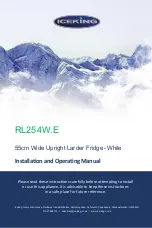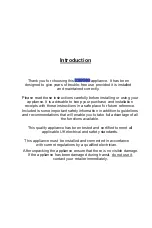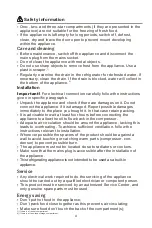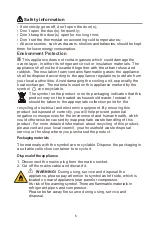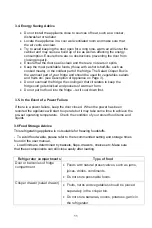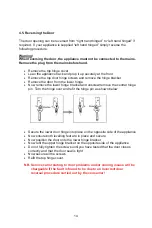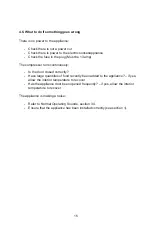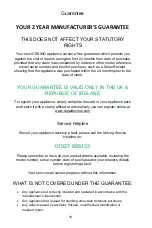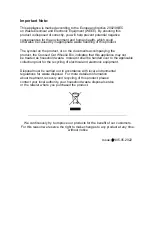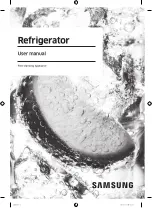
8
Section 1. Installation
-
IMPORTANT!
This appliance must be left to stand in an upright position for
at least 4 hours before being switched on for the first time.
-
Remove all packaging and securing tape from the appliance.
-
Wash the interior of the appliance with luke warm water containing a small
amount of bicarbonate soda (5ml to 0.5 litres of water).
-
Position the appliance in a dry atmosphere and out of direct sunlight.
-
Do not position next to a cooker or other sources of heat, i.e. radiator.
-
If positioned next to another fridge or freezer, leave a minimum gap of 2cm
between the appliances in order to avoid condensation.
-
A clearance of 50mm should be left above the appliance. If this cannot be
achieved you should ensure a clearance of 25mm is maintained on each side
of the appliance.
-
Please ensure that there is a small ‘air-gap’ between the condenser on the
rear of the appliance and the rear wall.
-
Do not place or store heavy items on the top of this appliance.
-
Ensure that the appliance is positioned on a firm flat floor.
-
This appliance must be level. Adjust the level by screwing the adjustable feet
up or down (use your fingers or a suitable spanner).
-
Ensure that the appliance is upright and both feet are in firm contact with the
floor so that the cabinet is stable.
-
Connect the plug to an adjacent 13amp socket outlet and ensure that the
appliance is not standing on the supply cable.
-
Install this appliance at a location where the ambient temperature
corresponds to the climate class indicated on the rating plate of the
appliance:
extended temperate (SN) :
"
this refrigerating appliance is intended to be
used at ambient temperature ranging from 10
°
C to 32
°
C;
temperate (N): this refrigerating appliance is intended to be used at ambient
temperatures ranging from 16
°
C to 32
°
C;
subtropical (ST): this refrigerating appliance is intended to be used at
ambient temperatures ranging from 16
°
C to 38
°
C;
tropical (T): this refrigerating appliance is intended to be used at ambient
temperatures ranging from 16
°
C to 43
°
C
-
N.B. If you site this appliance in a garage, out-building or a cold room
where the ambient temperature may fall below 6 to 8 degrees C,
condensation may form on the outer cabinet and ‘pool’ under the
appliance. This is quite normal and does not indicate that there is a
fault with the appliance.
To prevent condensation building up on the outer cabinet ensure that
the ambient temperature is above 8 degrees C.
Summary of Contents for RL254W.E
Page 22: ...CKICK Q02 A...

